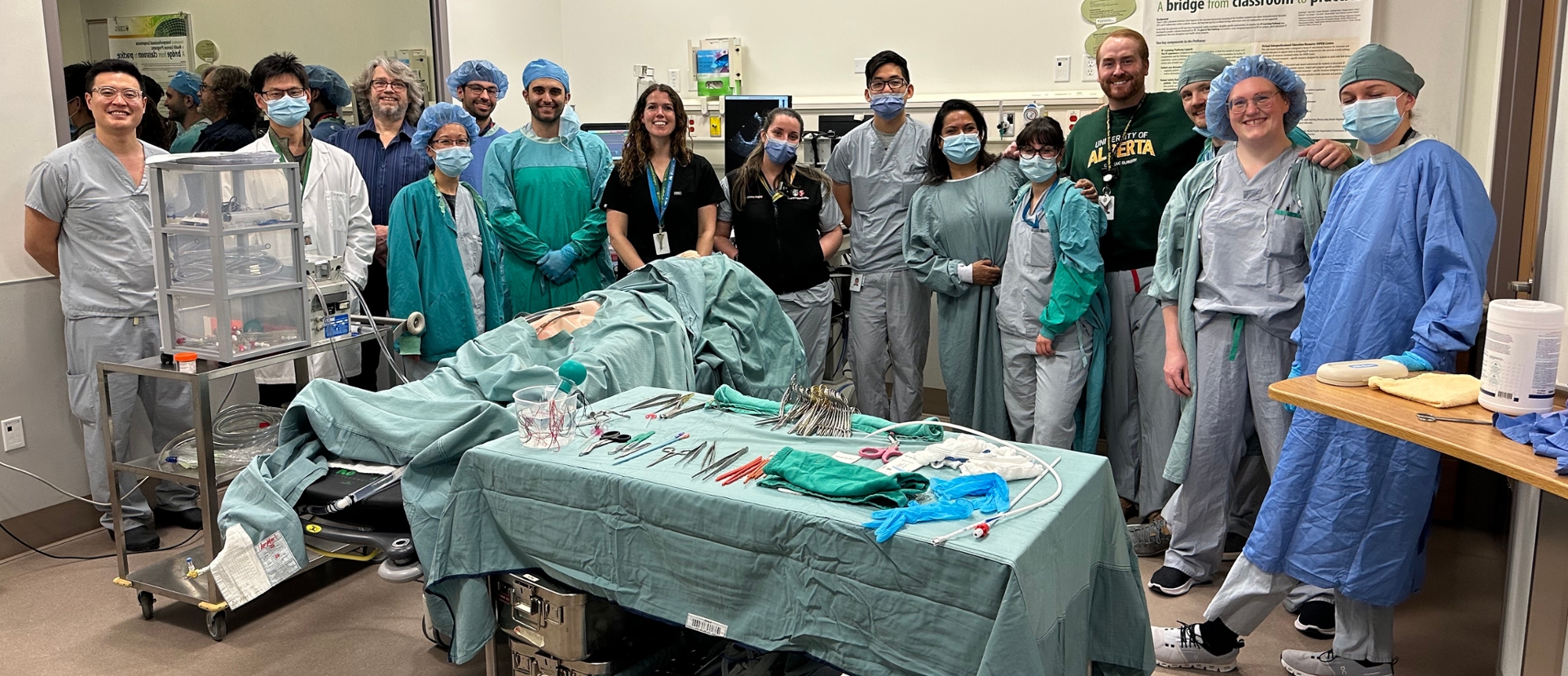Teamwork and tools key to successful cardiac procedures
26 April 2023

Surgical team in training
Abigail White didn’t skip a beat when it came to deciding the direction her medical training would take. “I figured I should go big, so I chose to shadow a cardiac surgeon,” says White. “And honestly, it was love at first sight. The first time I saw a beating heart, I knew cardiac surgery was for me.”
While for White seeing a human heart stop and then start beating again is thrilling, she’s also aware of the seriousness of cardiac surgery. “One thing that I realized throughout surgical residency is that at the end of the day, it all comes down to patient safety,” she says.
This realization led White to take a clinical hiatus from her Department of Surgery residency program, which was in its third year, to pursue a PhD in experimental surgery. She was prompted to do this when she realized other professionals in high-risk industries – aviation, for example – constantly run simulations to ensure things go smoothly, but her own profession doesn’t offer similar realistic training opportunities.
White explains that a full cardiac surgical team tends to be larger than in most other surgical specialties, and includes anesthesiologists, surgeons, nurses and perfusionists, who operate specialized medical machinery like heart-lung machines. These professions all practise simulations with their speciality peers, but the entire team doesn’t actually meet until a surgery is taking place. Surgical trainees are taught how to do a procedure, but they don’t get to experience a real one until it’s happening right in front of them. She believes this needs to change. “A successful operation depends on a successful team,” she stresses. “So we decided to develop this multidisciplinary simulation program that has been ongoing for the past couple years now,” she says. White credits colleague Andrew Reid, cardiac anesthesiologist Surita Sidhu, her program director Steven Meyer and her PhD supervisor, Bin Zheng, for helping her develop the program.
As part of the program, on March 31, White and her colleagues Reid and Devin O’Brien (PGY-3) coordinated a simulation of an uncommon procedure: emergency chest reopening in post-operative patients in a cardiovascular intensive care unit. This simulation was intended to test a new reopening cart for this life-saving procedure; one which they hope will become the standard for surgical training programs.
For the simulation, the team created a realistic training environment to improve patient safety during this highly specialized surgery. Using a 3D printer, Reid created a patient chest model with a two-sided sternum, which was then wired together to re-create a post-surgical incision and covered with a silicon rubber overlay of ‘skin’. White notes that eventually this model will become a more interactive medical mannequin with adjustable vital signs connected to monitors.
O'Brien, who is a co-resident of White’s with an interest in quality improvement, created a new sternal reopening cart to replace the outdated model currently in use. “We’re often struggling to find the material that we need, wasting time for us to get the chest open. We needed a cart that was straightforward and easy to use by anyone,” explains White.
Finally, together with Reid and Sidhu, they created a simulated cardiopulmonary bypass environment to allow the practise of cardiopulmonary bypass emergencies. The room looks exactly like an operating room, allowing the entire surgical team to be fully immersed in the simulation. “Working as a team in a simulated environment allows us to practise our non-technical skills, often overlooked in surgical training, but crucial to a patient’s successful outcome,” says White.
With the successful simulation now complete, White will wrap up her PhD in June and resume clinical rotations this July. Although she’s returning to a clinical environment, she plans to continue her research with the ongoing establishment of a robust program of team-based training for the cardiac operating room and intensive care unit at the Mazankowski Alberta Heart Institute.